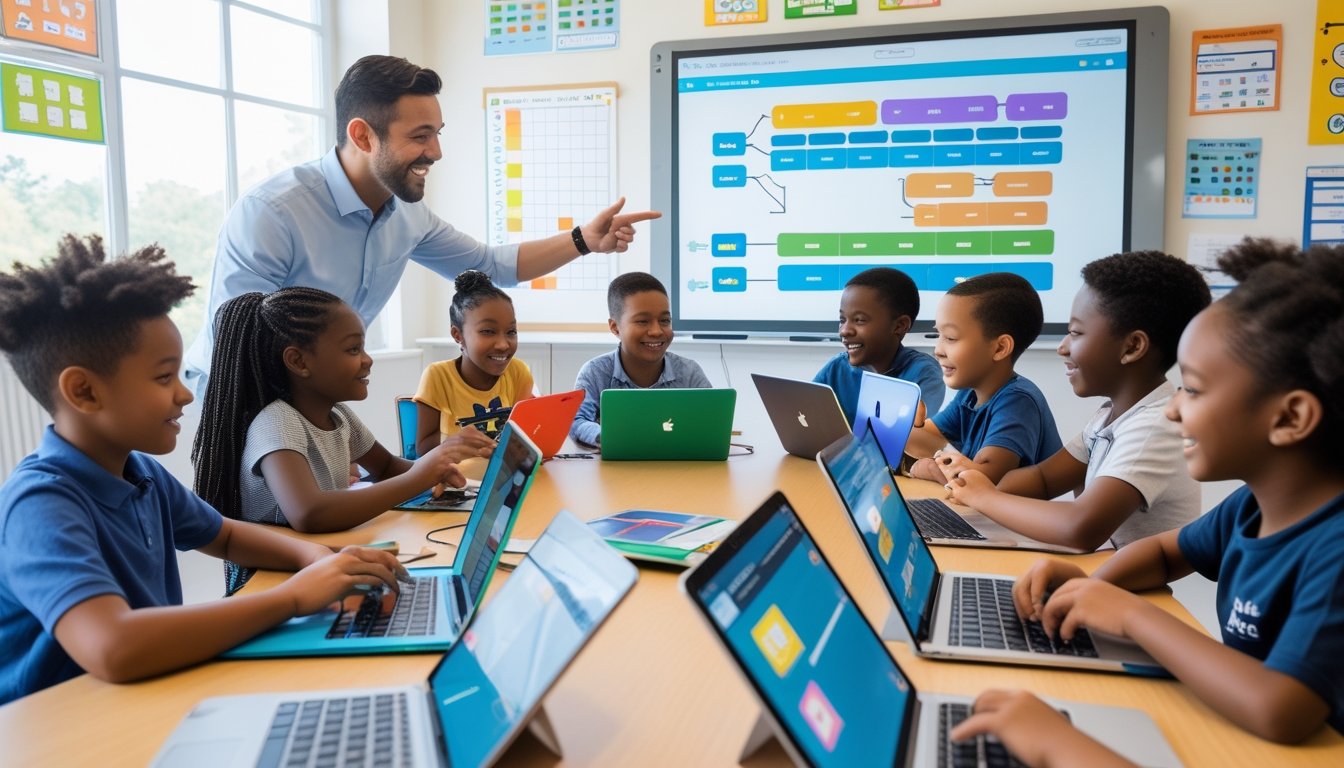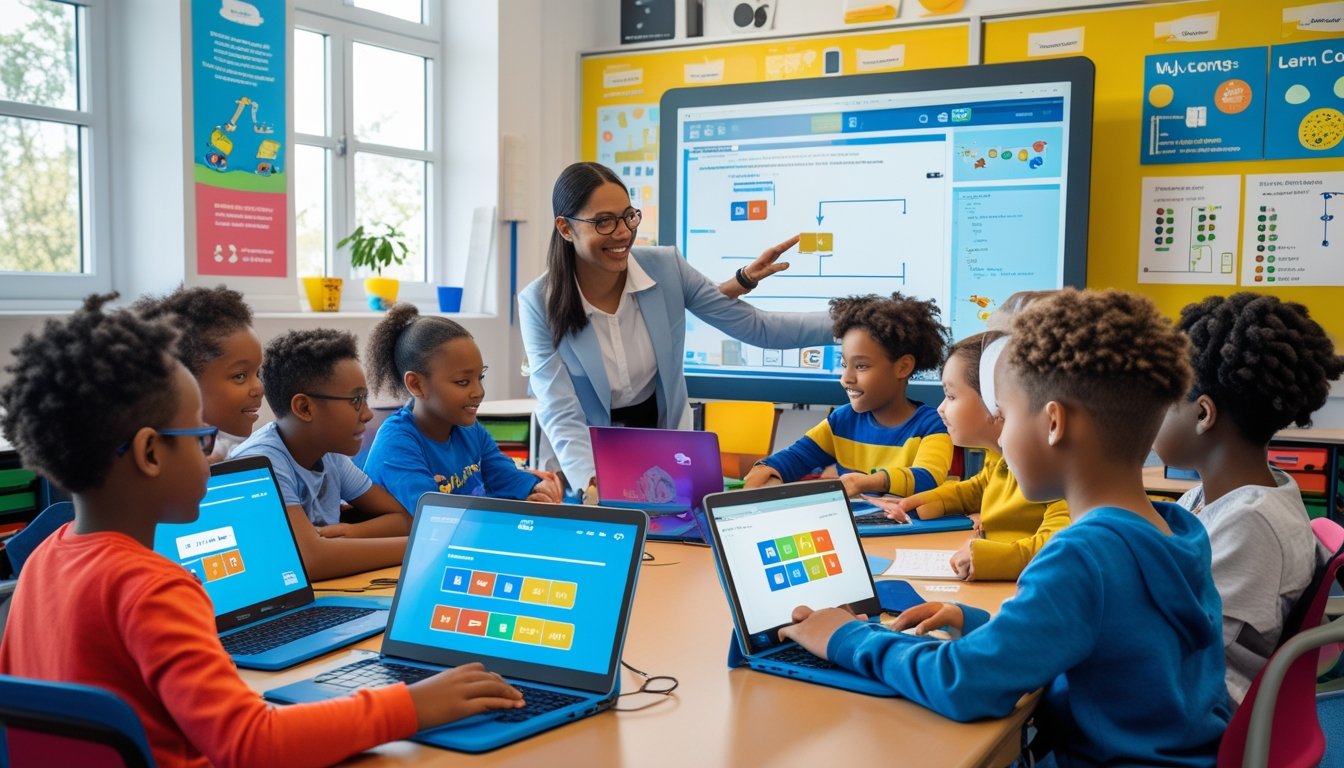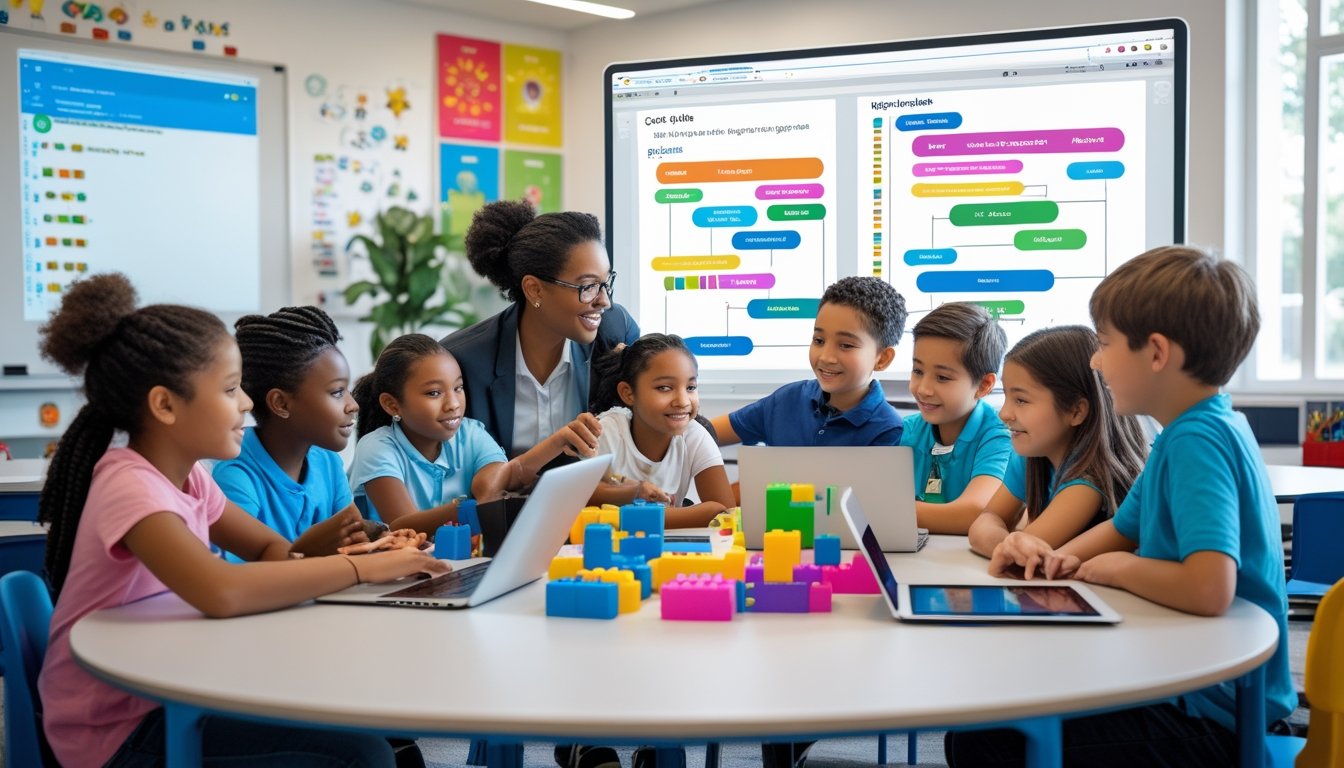Late updated: 18 Aug 2025 10:08
Written by:
Creative Strategies For Teaching Coding To Children: Engaging Young Minds
Introducing children to coding can initially seem daunting, yet it holds the potential to be incredibly fulfilling. The key lies in making coding an enjoyable and engaging adventure, turning complex concepts into playful explorations. From crafting interactive games to using real-world analogies, we can transform code from a string of incomprehensible text into a playground of endless creativity for young learners.

Our mission is to inspire curiosity and build foundational skills through creative strategies that go beyond traditional teaching methods. Interactive projects and visual tools can ignite a passion for programming in young minds, fostering not only coding skills but also nurturing problem-solving abilities and logical thinking. With the right approach, coding becomes more than just instructions for computers; it turns into an inspiring journey of discovery.
Let’s delve into innovative techniques that encourage children to see coding as both a skill and an art form. By creating a learning environment that mixes enjoyment with educational value, we aim to lay the groundwork for a lifelong passion for technology and innovation.
Key Takeaways
- Creative strategies make coding engaging for kids.
- Interactive and playful methods enhance learning.
- Building curiosity enhances problem-solving skills.
Fundamentals Of Teaching Coding To Children

Teaching coding to children requires a clear understanding of essential programming concepts, fostering computational thinking, and introducing them to accessible programming languages. By focusing on these areas, we can effectively nurture their interest and understanding of coding.
Core Programming Concepts For Young Learners
We begin with variables, which are containers for storing data. Children can relate to variables by thinking of them as boxes that hold different types of information.
Next, it's important for them to learn about loops. These help in executing repetitive tasks efficiently—imagine it as creating a pattern or a repeated series of steps in an art project.
Finally, conditionals allow programs to make decisions, typically using 'if', 'then', and 'else' statements.
These core concepts form the backbone of problem-solving and are critical for developing a foundational understanding of coding.
Promoting Computational And Logical Thinking
Computational thinking is akin to turning complex problems into simpler steps. When we help children break down a task into smaller, manageable parts, we enhance their problem-solving abilities.
Logical thinking is also vital. By encouraging children to recognise patterns and create algorithms—step-by-step solutions—we nurture their ability to think logically and sequentially. It is essential for them to understand how to approach problems methodically, much like solving a puzzle.
Pattern recognition is another aspect, which involves identifying similarities or differences in data, aiding them to predict outcomes and make informed decisions.
Introduction To Programming Languages And Block-Based Coding
To make coding approachable, we introduce children to programming languages like Scratch and Blockly. These platforms use block-based coding, which simplifies the learning process.
Block-based coding allows children to visually drag and drop code blocks, making it easier to grasp programming structures without getting bogged down by syntax errors.
Block-based environments are excellent for demonstrating core ideas such as loops and conditionals in a tangible way. As they gain confidence, children can smoothly transition to more complex languages, cementing their coding knowledge and opening the door to exciting future opportunities.
Creative And Interactive Strategies For Coding Education
In our quest to make coding education both engaging and effective for children, we focus on creative methods that incorporate block-based tools, gaming, robotics, and collaborative learning. These strategies encourage children to explore coding in an enjoyable and practical way.
Using Block-Based Tools And Coding Platforms
Block-based tools like Scratch and Blockly are pivotal in teaching coding to young learners. These platforms use visual blocks that represent coding concepts, making them easier to understand for kids. Tynker is another popular tool that offers interactive learning experiences tailored to young minds. By incorporating vibrant graphics and simple instructions, students can quickly grasp the fundamentals of coding.
Code.org and Hour of Code are initiatives that provide structured lesson plans and resources. They integrate block-based learning with interactive games and challenges designed to build confidence in coding. The focus is on nurturing logical thinking and problem-solving skills while maintaining an engaging learning experience. These tools also accommodate a gradual progression to more complex programming languages like Python, thereby creating a comprehensive coding curriculum.
Game-Based Approaches And Hands-On Projects
Games such as CodeCombat and Lightbot transform coding education into a captivating experience. By directly involving children in coding challenges, these platforms foster a playful yet educational atmosphere. Kodable is another engaging app that introduces programming through game-based learning. These tools allow children to apply coding concepts in real-time, ensuring that the lessons are both memorable and enjoyable.
Hands-on projects further enhance the learning process by involving students in practical applications. Coding projects encourage children to create and build using the coding skills they’ve learned. This not only enhances their technical abilities but also fuels their creativity. Such projects can include anything from creating a simple computer game to developing an application. This experiential learning method deeply embeds coding skills, making the knowledge more applicable.
Integrating Robotics And Coding Toys
LEGO Mindstorms are an excellent gateway to integrate robotics with coding education. These kits allow children to build and program robots, providing a tangible application of coding concepts. By using a hands-on approach, students experience the interplay between hardware and software, which is critical in today’s tech-driven world.
Coding toys encourage inquiry and experimentation, allowing children to develop their logical reasoning. These toys offer various levels of complexity, making them appropriate for different age groups and skill levels. By creating an interactive learning environment, educators can utilise these tools to inspire a genuine interest in coding and technology. This ensures that students not only learn to code but also understand its broader applications in robotics and automation.
Collaborative And Project-Based Learning
Project-based learning encourages students to collaborate on projects, bridging the gap between theoretical knowledge and practical application. By working together, students learn communication and teamwork skills alongside coding concepts. Collaborative projects often involve creating apps or games, which are substantial enough to require diverse skill sets.
Incorporating a collaborative approach allows for a more dynamic and interactive learning environment. This strategy supports diverse learning styles and provides numerous opportunities for peer-to-peer learning. By encouraging students to share insights and discuss solutions, we foster a community where ideas flourish and creativity thrives. This enhances interactive learning by promoting an atmosphere of mutual support and inspiration, crucial for nurturing our future coders.
Frequently Asked Questions

When we introduce coding to children, clarity and engagement are vital. By embedding coding into school curricula, we offer practical learning benefits and access to creative resources. Here are some key questions and strategies to consider.
What are effective methods for introducing coding to young beginners?
Engaging children with visual coding tools like block-based languages can simplify the initial learning curve. Interactive games and storytelling integrated with coding challenges are also helpful. These approaches make learning both enjoyable and educational, fostering curiosity and creativity.
How can coding be seamlessly integrated into existing school curricula?
Incorporating coding into mathematics or science subjects provides a hands-on approach to abstract concepts. Schools can introduce coding projects that complement existing lessons, making the learning experience more cohesive and meaningful for students.
What are the principal benefits of learning to code for children within educational systems?
Learning to code enhances problem-solving and critical thinking skills. It prepares children for future technology roles by fostering logical thinking and creativity. Additionally, coding can boost confidence in tackling complex tasks and projects.
What resources are available for volunteers interested in teaching children how to code?
Numerous online platforms offer training materials and lesson plans tailored for teaching coding to children. Organisations like Code.org and various local coding clubs provide resources and support for volunteers eager to contribute to children's education.
Which online platforms are best suited for children learning programming?
Platforms such as Scratch, Tynker, and Code.org have intuitive interfaces designed for young learners. They offer a range of projects, from basic exercises to complex challenges, to suit various learning paces and interests.
How can educators assess and enhance a child's learning experience in coding classes?
Regular assessments should focus on understanding concepts rather than rote memorisation. Educators can use project-based evaluations and encourage peer reviews. Personalised feedback helps in identifying areas for improvement and recognising achievements, thus enhancing the overall learning journey.
